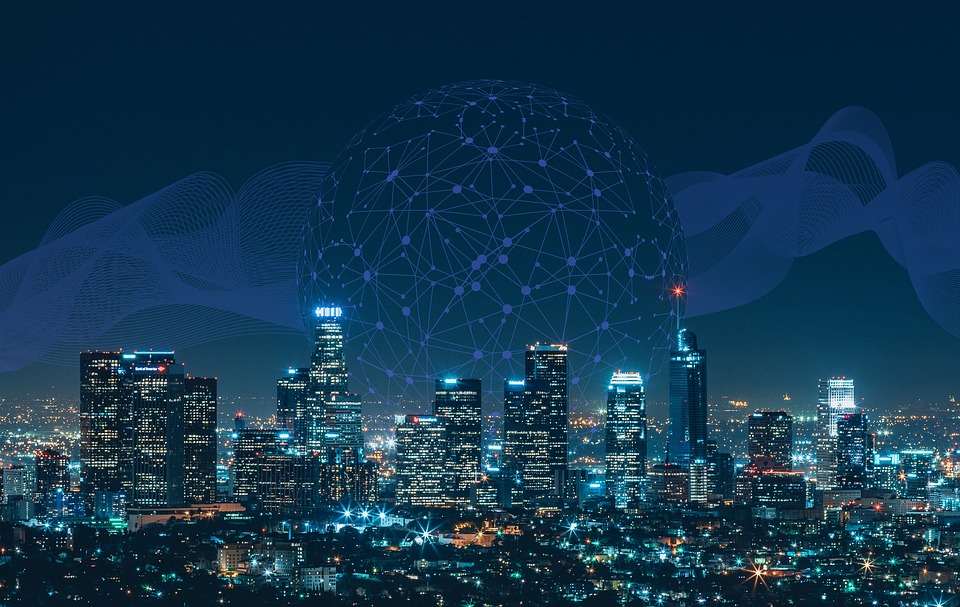
Smart cities have been a major trend in urban planning over the last decade, with planners and architects claiming that such cities are safer, healthier, more prosperous, and more environmentally conscious. But like many, you may be left wondering, “what exactly is a smart city?” Toyin-Ann Yerifor is an Architectural Consultant based in Calgary, Alberta who earned her Master’s Degree in Architecture at UEL, London. Yerifor is a firm believer in smart cities, and knows first-hand what infrastructure is necessary in order to design such a city. While she acknowledges that on the surface, smart cities may sound too good to be true, she assures readers that they are achievable. Below, Toyin-Ann Yerifor provides her insight into what she believes are the three ways that smart cities have evolved today.
The Technological City
It likely won’t come as a surprise to learn that a key tenet of smart cities is that they invest heavily in technology. According to Toyin-Ann Yerifor, in order for cities to be as efficient and safe as possible, using intelligent technology is essential. The onset of the technological city was prompted by the attacks on September 11, 2001, which caused cities to begin installing surveillance cameras and using artificial intelligence to safeguard public spaces. Today, the use of surveillance and AI are widespread, and smart city technology has evolved in other ways, such as using smart metering for parking and traffic tickets. Another way that cities hope to evolve technologically is through 5G networks. However, Toyin-Ann Yerifor asserts that while great strides have been made to introduce technology into cityscapes, planners and governments should think carefully about which types of technology they use. She asserts that “smart mobility,” which would aim to promote walking, cycling, and electric vehicles, is the next step that cities should be taking in order to reduce carbon emissions.
The Resilient City
The second way that smart cities have evolved is in their resiliency. Climate change has caused significant increases in the frequency and severity of natural disasters, such as forest fires and hurricanes around the world. Although people and governments need to address the underlying causes of these newfound weather patterns (more on that below), it is also important for 21st century cities to anticipate and be prepared for such events. One method of doing this is through resilience planning which uses technology, specifically IoT sensors and artificial intelligence. Toyin-Ann Yerifor claims that weather and damage prediction tools that use AI technology are quickly becoming commonplace in smart cities. In addition to local governments, architects, insurers, financiers, and first responders are also using such technology. This technology is a key part of building a resilient, smart city as it provides the best chance possible of predicting natural disasters. In turn, this allows cities to work with their medical, fire, police, and sanitation teams to prepare for the problem in advance and better manage the problem in its aftermath.
The Green City
Taking sustainability to new heights is the hallmark of any truly great smart city. However, marrying an environmentally conscious, green city with a fair and equitable city is one of the greatest challenges that architects, and city planners face today. The goal now more than ever is for cities to offer its residents a high quality of life. This includes factors like top-notch education, high-paying job opportunities, affordable housing, convenient public transit options, and vibrant culture. However, in the 21st century, this goal must incorporate a dramatic reduction in pollution levels, energy consumption, and carbon emissions. According to Toyin-Ann Yerifor, the specific challenges to achieving a green city lie in the growing rates of congestion, homelessness, and income disparity that plague many urban areas. Nevertheless, that doesn’t mean that a green city isn’t a goal worth striving for, asserts Toyin-Ann Yerifor. In fact, it is believed by many architects that achieving this goal is mandatory if we wish for our planet to outlive climate change.
Final Thoughts
Creating a city worth living in means requiring businesses and governments to invest in public and social infrastructure. In 2019, such infrastructure goes well beyond improved recycling programs. Affordable housing near transit hubs, public green spaces, electricity generation through renewable energy sources, growing public transit systems, and implementing strict building codes that require the use of green technology are just a few of the large-scale issues that cities will need to tackle in order to survive the climate crisis. In the end, green cities aren’t just about creating green infrastructure, they should also be focused on fostering eco-conscious citizens that will be active in safeguarding their city’s sustainability in the decades to come.
